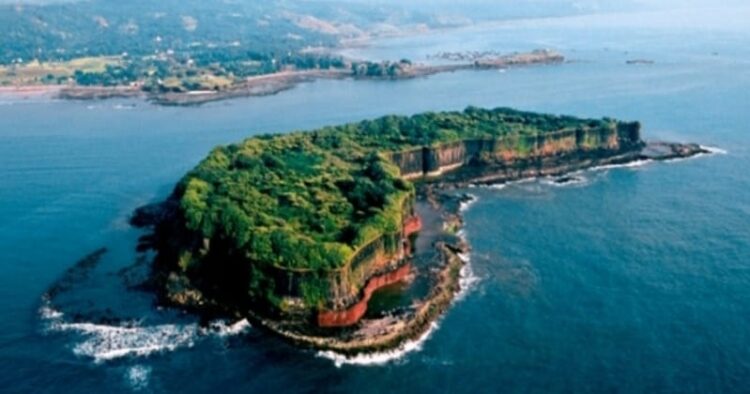Chhatrapati Shivaji Maharaj, the legendary Maratha warrior king, left an indelible mark not only on the sprawling landscapes of the Deccan but also on the vast expanse of the Arabian Sea. His visionary approach to maritime security led to the construction and capture of several strategically significant sea forts along the Western coast of India. These forts, masterpieces of military architecture, were pivotal in safeguarding the Maratha Kingdom from foreign invasions and establishing naval dominance. Let’s delve into the historical significance of five such maritime bastions that stand as a testament to Shivaji Maharaj’s maritime genius.
Sindhudurg Fort: A formidable Naval Defence
Located off the Malvan coast in Maharashtra, Sindhudurg Fort stands as one of Shivaji Maharaj’s most remarkable naval achievements. Built on Kurte Island, construction commenced in 1664 and was completed in a mere three years, showcasing Shivaji’s commitment to rapid fortification. The fort’s design included strategically placed bastions, a maze of interconnecting tunnels, and fortified walls, making it impregnable against naval threats from the Portuguese and Siddis. Sindhudurg served as a formidable defence, securing the Maratha coastline from potential invasions.
Vijaydurg Fort: The fort of victory
Originally known as Gheria, Shivaji Maharaj captured this fort from the Adil Shahi dynasty in 1653, renaming it Vijaydurg, meaning “Fort of Victory.” Positioned on the Devgad coast, Vijaydurg played a pivotal role in protecting the Konkan region from foreign invasions. With its commanding position overlooking the Arabian Sea, it became a vital base for the Maratha Navy, ensuring control over maritime trade routes and further solidifying Shivaji’s influence in the region.
Raigad Fort: A panoramic guardian of the sea
While primarily recognised as Shivaji Maharaj’s capital, Raigad Fort extended its strategic importance to maritime defence. Perched atop a hill, Raigad offered a panoramic view of the Arabian Sea, serving as a central command for coordinating naval operations and safeguarding the coastline. Its elevation and strategic location made it an integral part of Shivaji’s integrated defence strategy, showcasing his keen understanding of both land and sea defence.
Suvarnadurg Fort: Guardian of the Golden Coast
Built in 1660 at the Northern entrance of the Kanakadurga Creek, Suvarnadurg, meaning “Golden Fort,” played a key role in protecting the coast of Ratnagiri. Its robust fortifications and proximity to the Arabian Sea allowed the Marathas to control maritime activities and thwart potential invasions. Suvarnadurg became a symbol of Maratha naval prowess, ensuring the security of trade routes along the Konkan coast.
Padmadurg Fort: Countering Siddi Naval power
Constructed by Shivaji Maharaj to counter the growing influence of the Siddis, Padmadurg, also known as Kasa Fort, was strategically positioned on an island near Alibaug. Serving as a vital naval base, Padmadurg facilitated control over surrounding waters, ensuring the safety of Maratha ships and trade routes. This fort stood as a testament to Shivaji’s proactive approach in countering potential threats and maintaining supremacy in the Arabian Sea.
Chhatrapati Shivaji Maharaj’s strategic foresight extended beyond the Deccan to the maritime domain. The sea forts he built and captured are enduring symbols of Maratha naval supremacy, showcasing his genius in military architecture and strategic planning. These forts not only protected the coastline but also facilitated trade, ensuring the prosperity and security of the Maratha Kingdom. Today, these maritime bastions continue to narrate the saga of Shivaji Maharaj’s indomitable spirit and vision for a secure and prosperous realm. As we reflect on these historical marvels, we are reminded of the legacy of a leader whose influence reached far beyond the shores of the Deccan plateau.




















Comments